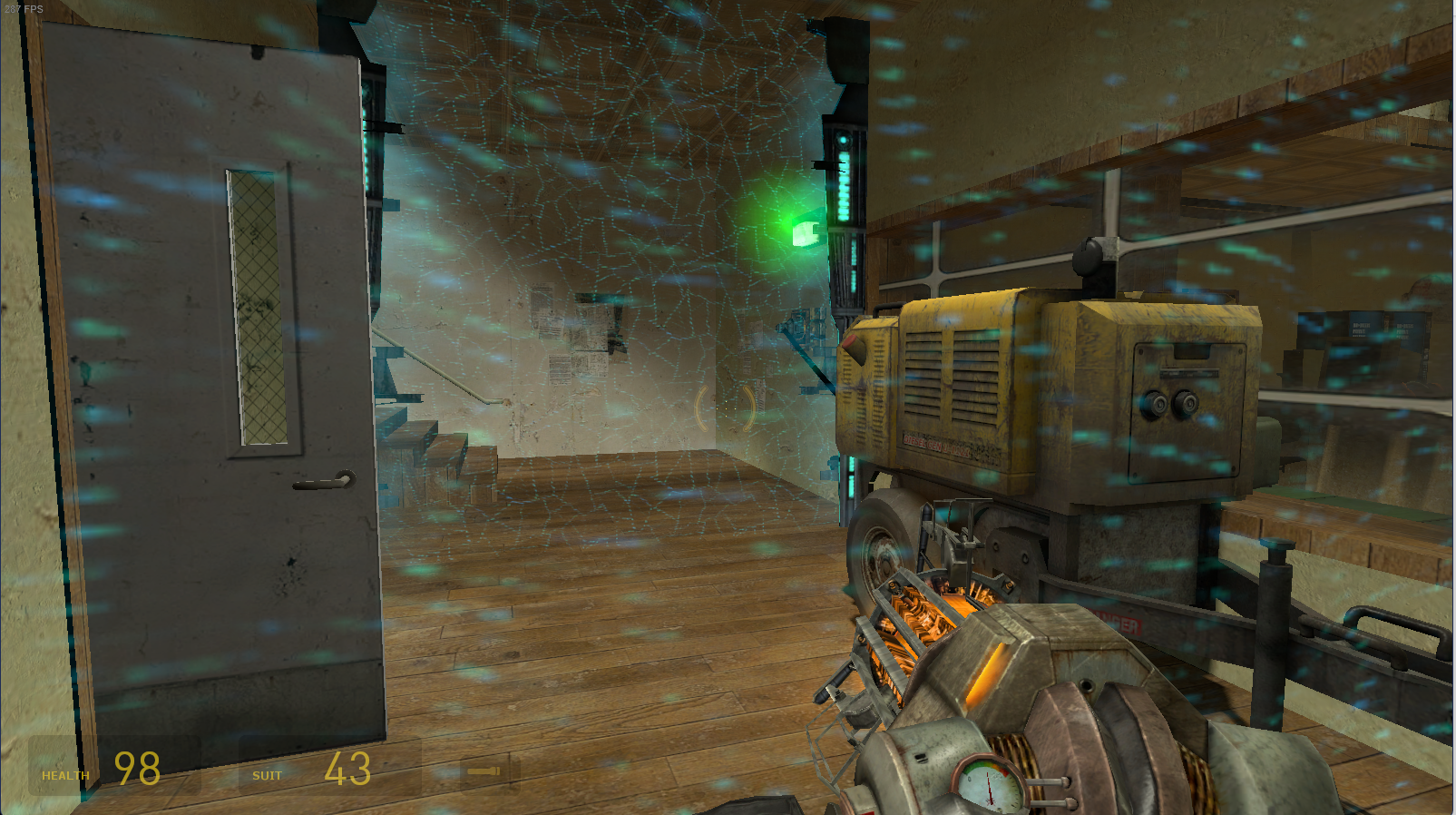"Plug It In, Plug It In" - Half Life 2
"Plug It In, Plug It In" - Half Life 2
“Plug it in, plug it in” is a custom level for Half Life 2
Development Info:
Game: Half life 2
Genre: FPS
Mode: Single Player
Team Size: 1 Developer
Engine: valve’s hammer editor
Development Time: 120 hours
Responsibilities:
Concept and Preprodcution Documentation
puzzle Design and Implementation
Scripting puzzle mechanic
combat Flow
enemy encounter design
Lighting and decoration
“Plug it in, Plug it in” is a level for Half Life 2 that takes place sometime after the main story. Players take the role of Gordon Freeman as he searches for a new vehicle. His search leads him to a Combine medical facility. Gordon will have to use his weapons, electric generators, and environmental objects to navigate the treacherous hospital.
design goals
Create a level that has a cohesive and realistic visual theme
Create combat encounters that highlight enemy intelligence and encourage player movement.
Create a level that had clear conveyance of the goal.
what i learned
learn the toolset early and experiment
As I delved into this project, I devoted time to mastering Hammer Editor early on. This decision gave me the freedom to explore and experiment with its array of tools. By gaining familiarity with the software at the outset, I was able to efficiently navigate its functions and leverage its capabilities to bring my level design vision to life. Through persistent practice and hands-on experience, I honed my skills and deepened my understanding of Hammer Editor, enabling me to execute my creative ideas effectively. Learning the toolset early allowed me focus on design, rather than the tool.
don’t go in without a plan
Having a solid plan in place when implementing designs in a level is crucial for a successful outcome. A well-thought-out plan not only helps streamline the development process but also ensures that the final design meets the desired objectives. By carefully mapping out the layout, gameplay mechanics, pacing, and visual elements beforehand, level designers can avoid unnecessary revisions, reduce development time, and maintain consistency throughout the project. Additionally, having a clear plan provides a roadmap for the team to follow, fostering better collaboration and communication among members. Overall, implementing designs in a level without a plan can lead to confusion, inefficiencies, and ultimately, a subpar gaming experience for players.
documentation is your friend
Documentation in level design is crucial for ensuring a clear understanding of the design intent, mechanics, and overall structure of a game environment. Detailed documentation serves as a reference point for the entire development, aiding in consistent implementation and cohesive integration of various elements. It helps streamline development, reduces wasted resources, and minimizes the risk of missing a milestone. Comprehensive documentation also facilitates future updates, modifications, and expansions by providing a roadmap of the level's design foundation. Ultimately, thorough documentation is fundamental in promoting efficiency, maintaining quality, and achieving a cohesive and polished gameplay experience for players.
combat is tricky
Implementing combat in a video game is a complex process that requires a delicate balance of mechanics, conveyance, and AI behavior. The challenge lies in creating a system that is both engaging for players and challenging enough to keep them hooked. I had to consider factors such as enemy variety, weapon balance, difficulty progression, and player feedback. Each decision made during development can have a significant impact on the overall feel and enjoyment of the combat system. Testing and iteration are crucial to refine the experience and ensure it meets the intended design goals.











